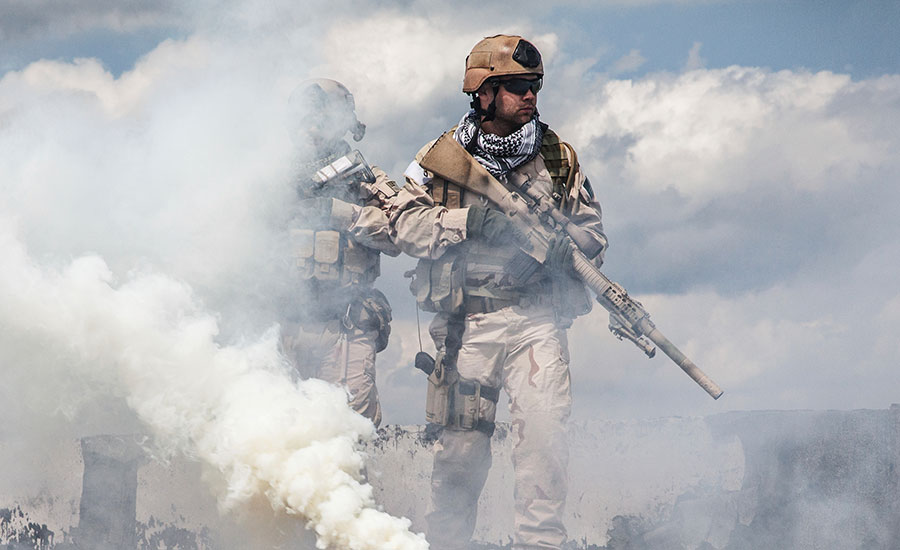Navy SEALS’ “extreme ownership”
Forget finding blame, leaders own everything

Two retired Navy SEALs, Jocko Willink and Leif Babin, recently published their book Extreme Ownership – How U.S. Navy SEALS Lead and Win1, which presents the application of their leadership skills in the battle of Ramadi, Iraq, and then turning these skills into leading in business and organizational situations.
The authors simply state, “The only meaningful measure for a leader is whether the team succeeds or fails. Leaders are either effective or ineffective. The best leaders are not driven by ego or personal agendas. They are simply focused on the mission and how best to accomplish it.”2
For Willink and Babin, Extreme Ownership means “leaders must own everything in their world, there is no one else to blame.”3 It’s a mindset that those supposedly leading safety, including safety professionals, supervisors, managers, and executives, may find hard to accept.
This means taking personal OWNERSHIP of everything that impacts the job. Even things you’ve decided you have no control over — employees who seem to always have close calls or injure themselves or others. As a leader you OWN it.
Own unruly employees’ behavior? From a SEALs perspective, as a safety leader you “bear full responsibility for explaining the strategic mission, developing the tactics, and securing the training and resources to enable your team to properly and successfully execute.”4
As a safety leader, you must train and mentor the underperformers. If they do not improve, exercise your Extreme Ownership, be loyal to your team and the mission above any individual, make the tough call to terminate and hire replacements.5
Another fundamental truth of Extreme Ownership is “there are no bad teams, only bad leaders.”6 Success or failure rests solely on the shoulders of team leaders and the standards they set for success. Commit to a culture of Extreme Ownership by all team members and accomplish the task at hand at the highest levels of performance.7
According to Willink and Babin, “it’s not what you preach, it’s what you tolerate.”8 Consequences must be attached to poor safety performance, not excuses. Tolerating substandard safety performance, bickering or infighting among team members, is “Leading from Behind.” Focus your team on the mission, set higher performance standards, and hold the team to achieving these standards.
The “mission” has to do with the task(s) at hand that need to be accomplished to succeed. Demonstrate a resolute belief in the mission to achieve results. If you doubt the mission, ask questions and seek clarification from your leaders. To accept a mission without clearly understanding how it fits into the company’s strategic goals is “Leading from Behind.”9
When something goes wrong, do you look around for something and/or someone to blame? Think about it. Would the management debate about who to blame be different if managers conceded the incident was their fault and focused on what THEY could do to prevent it from happening again? Remember, accepting Extreme Ownership means it is all about the mission and not individuals. The message to management is check your ego at the door and spend your valuable time on what YOU can do to prevent this incident from happening again instead of who you can punish.
The laws of “safety combat”
The SEAL’s laws of combat are 1) Cover and Move; 2) Simple; 3) Prioritize and Execute; and 4) Decentralized Command.10 These all apply to safety; learn them and STOP “Leading Safety from Behind.”
Cover and Move simply refers to team work. Smaller teams work within larger teams and sometimes conflict arises, resulting in safety problems. The leader must quell the friction between teams, promote working and supporting each other, and remain focused on the mission.11
Simple is all about taking the complexities of safety. If your employees are confused about their work and the attendant safety steps, Extreme Ownership requires you to ensure your team fully understands their role and contribution to the success of the mission.12
Prioritize and Execute involves remaining a step or two ahead of real-time problems to avoid failure. As Willink notes, “taking on too many problems simultaneously will likely lead to failure at them all.”13
Decentralized Command refers to the number of people one can manage — six to ten, according to the authors. Leadership needs to be distributed down through the teams along with the safety responsibilities. Team members must know what they need to do, and why they are doing it. Senior leaders maintain “situational awareness” by constantly communicating with their subordinate team leaders and back them up even when bad decisions are made.14
Closing thoughts
We need to stop “Leading Safety from Behind” and start viewing responsibility and accountability for safety in a new fashion. Willink and Babin offer a sound and successful approach to leading safety through Extreme Ownership. The narcissistic mindset toward leading and leaders’ responsibility for the safety of their employees must stop. Take total ownership of EVERYTHING involving personal and organizational success. Leaders need to stop blaming others and start blaming themselves for not achieving the mission of the organization.
References
1 Willink, J. and L. Babin. 2015. Extreme Ownership – How U.S. Navy SEALS Lead and Win. St. Martin’s Press. New York, NY.
2 Ibid. pp. 8.
3 Ibid. pp. 14.
4 Ibid. pp. 30.
5 Ibid. pp. 30.
6 Ibid. pp. 49.
7 Ibid. pp. 50.
8 Ibid. Pp. 54.
9 Ibid. pp. 77.
10 Ibid. pp. 109 – 191.
11 Ibid. pp. 120 – 126.
12 Ibid. pp. 140 – 147.
13 Ibid. pp. 161 – 166.
14 Ibid. pp. 183 – 191.
Looking for a reprint of this article?
From high-res PDFs to custom plaques, order your copy today!






